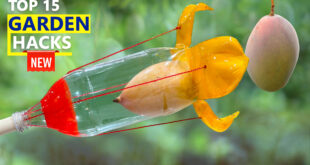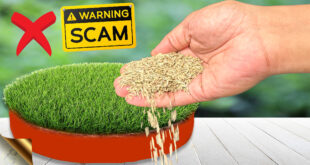In Today’s post, we will look into how to interpret different patterns of leaf curling – like upcurl, down-curl and side-curl and then diagnose possible reasons for leaf curl and treat this problem accordingly.
When you see leaves of your plant curling – whether upwards or downwards, your plants are trying to tell you something! The first thing that should come in your mind is: the PLANT IS IN STRESS. Stress is more commonly seen in younger plants than the more established or mature plants.
Now, let’s look into different patterns of leaf curls with scientific concepts and reasons for each of these and solutions or remedies to be applied to treat the problem of leaf curl.
- Leaf margins curling downwards and drooping down – like wilting: The Common Cause of this is Under watering and excessive heat like in summer season. This indicates your plant is sad and stressed and requires Attention! This is a sign of too much heat and under watering. The solution is pretty simple! – Just water the plant thoroughly and you will see them come back to normal in few minutes.
- Leaf tips or margins curling upwards and folding. Upwards curling occurs because of environmental problems rather than nutrient problems. This could either be due to heat stress or wind stress. Leaves Curl upwards or fold upwards in an attempt to stop exposing or reducing the surface of the leaf for photosynthesis and reducing transpiration and hence overall dehydration. But one problem here is once it curls upwards, it’s not going to uncurl or come back to its normal shape. If the whole plant is suffering from this, you need to worry. But if it’s only few leaves curling at lower portions of the plant, not to worry, if younger shoots are healthy. What’s the Remedy for this leaf curl? Just shift the plant under a shade net away from too much hot sun and mist the plant with some water once or twice a day.

- Leaves curling down or drooping underneath itself with some yellowing. – A Sign of Over watering and an early indication of root rot. To save the plant, take out the root ball and repot in a fully dry soil for immediate solution and do not water for at least 2 days. You can also add some antifungal into the potting mix or in water.
- Leaf Curling with wrinkling and unhealthy look with patchy or punctate yellow spots or specks and visible pests like aphids, mealy bugs, etc – obviously indicate – pest attack is the cause of curling. Spraying neem oil weekly once will help in prevention as well as treatment.
- Leaf Curl Virus also needs a special mention. This commonly affects plants like peppers and tomatoes. If you come across this leaf curl and you have ruled out the other causes of leaf curl as discussed, then you should dispose the plant to prevent spread to other plants nearby.

- Nutritional deficiency can cause Leaf Curling. The Fact you must remember is: about 90% of all leaf curling or leaf injury like yellowing and so on can be attributed to environmental issues – not nutritional.
The main nutritional causes of leaf curling are Magnesium and Manganese Deficiency.
Magnesium Deficiency Curling shows on the middle to older leaves with patching yellowing as well. But the leaf veins stay green (inter-veinal chlorosis).
Manganese deficiency curling first starts showing at younger leaves. So this is how you differentiate between the two.
So, the first thing you need to do to support this diagnosis of nutritional cause of leaf curling is a Soil PH Test. Too much alkaline soil will inhibit the absorption of these micro nutrients by the roots. Simply adding micro nutrient powder will not help. First test the PH and correct the PH. You can make it Acidic by adding Alum or Vinegar.
Then, You can also Foliar Spray with Epsom salt solution if magnesium deficiency is suspected.
 GKVKs – Gardening Tips and Store Gardening Tips and Store
GKVKs – Gardening Tips and Store Gardening Tips and Store



